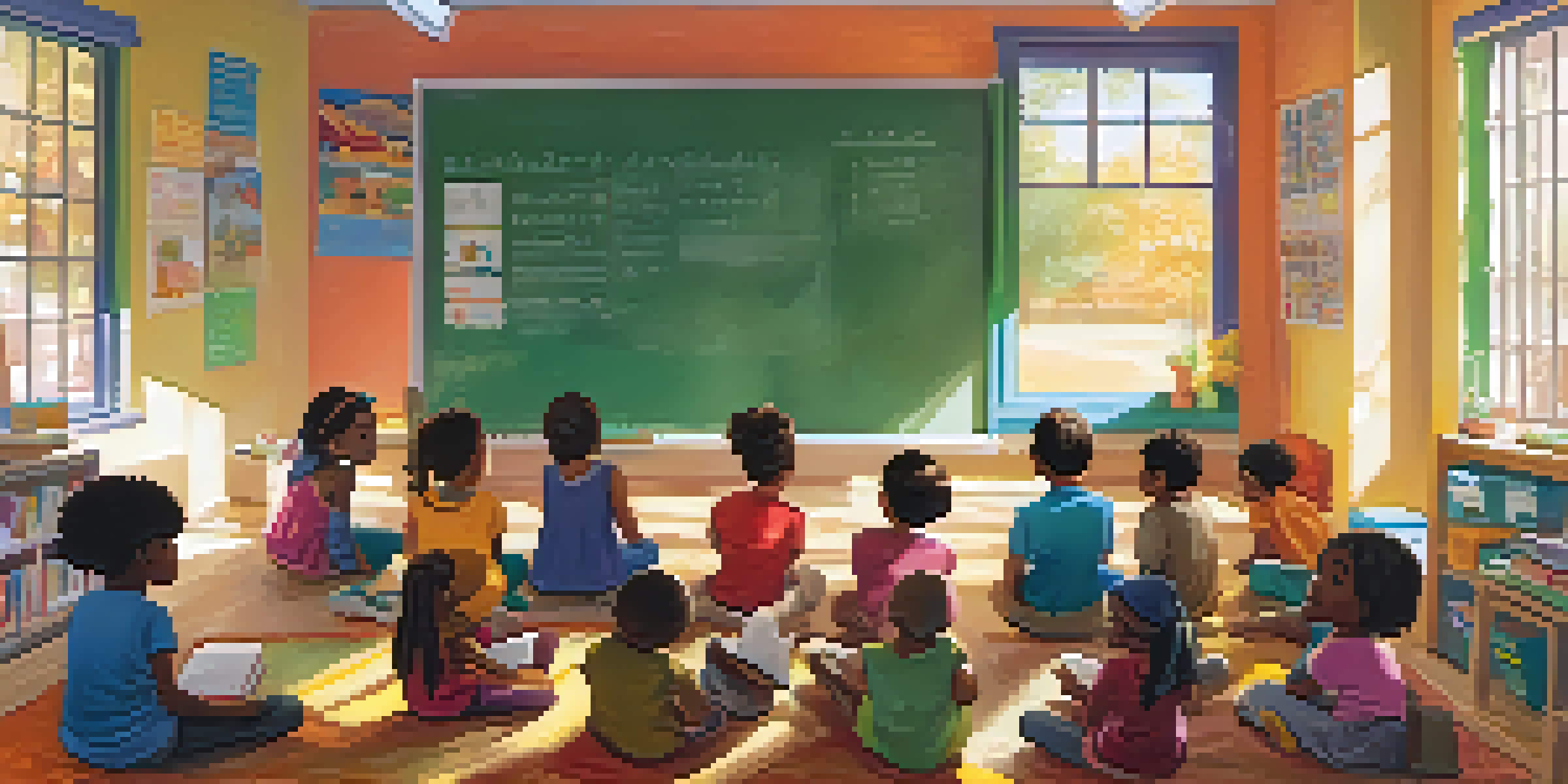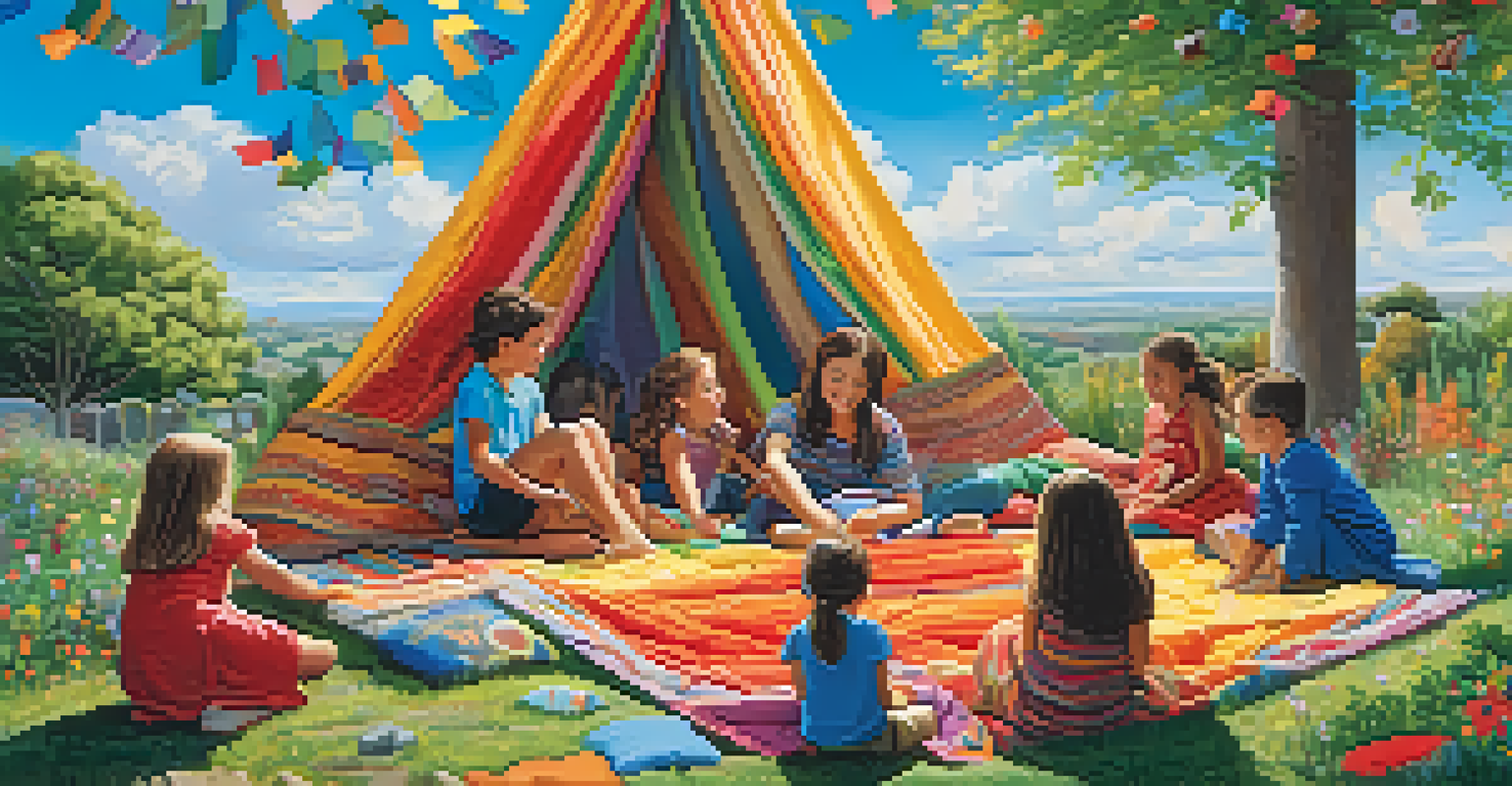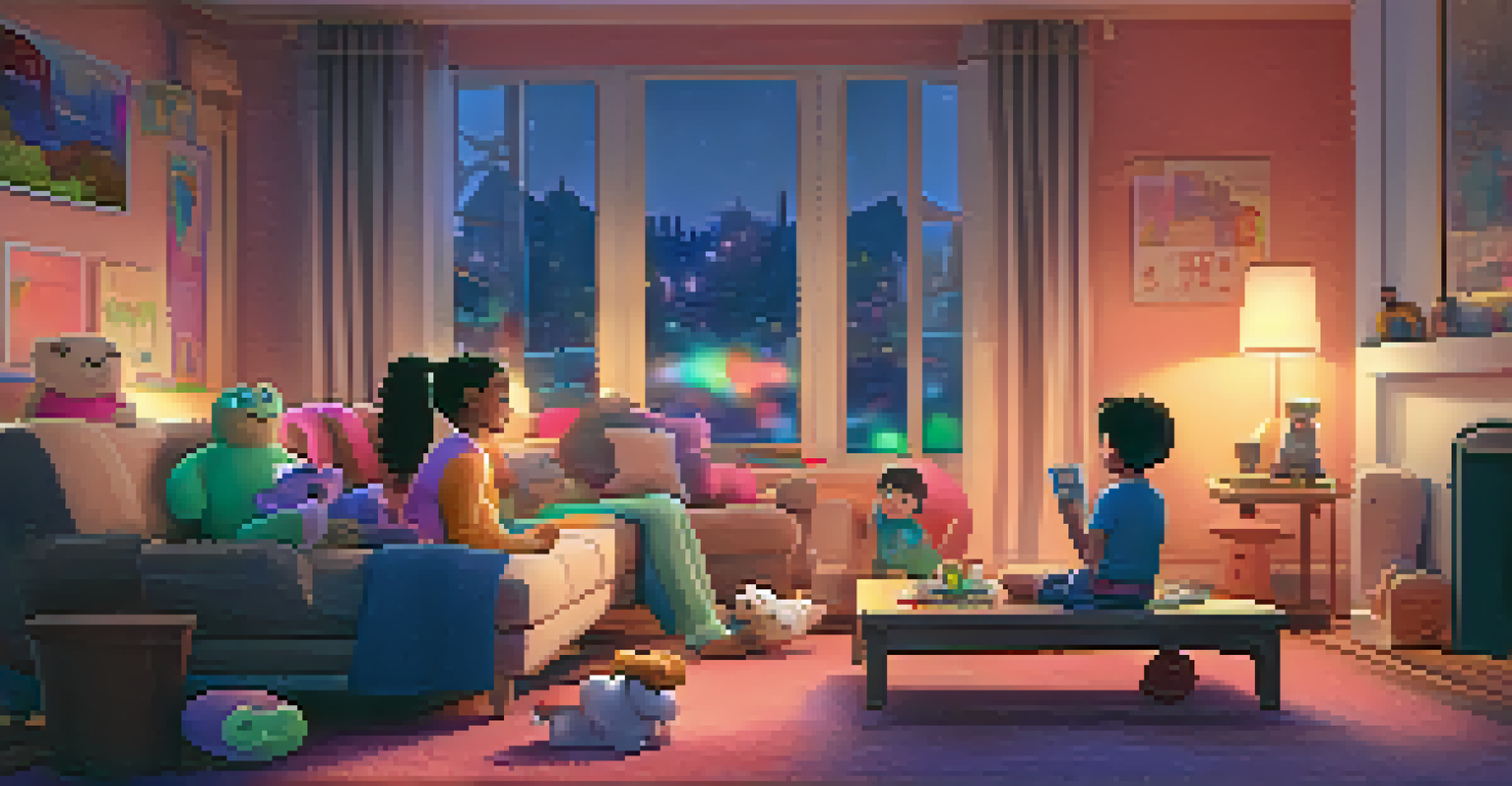The Role of Hollywood in Shaping Children's Media Narratives

The Historical Context of Children's Media in Hollywood
Hollywood has played a pivotal role in shaping children's media since its inception. Early animated shorts and classic films created a foundation for how stories were told to kids, often blending moral lessons with entertainment. For instance, characters like Mickey Mouse introduced children to a world of imagination, setting the stage for future narratives.
Children are made readers on the laps of their parents.
Over the decades, the evolution of technology and storytelling has transformed these narratives significantly. The introduction of television brought characters like Sesame Street’s Big Bird, who not only entertained but educated young viewers. These changes reflect the growing understanding of how children's media can influence their development.
Understanding this historical context is crucial as it highlights the ongoing impact Hollywood has on the narratives children consume today. By examining the past, we can see how themes and characters have evolved, often mirroring societal values and expectations. This sets the groundwork for analyzing current trends in children's media.
The Power of Storytelling in Children's Development
Storytelling is a powerful tool in shaping a child's understanding of the world. Hollywood has mastered this art, creating narratives that resonate with children on multiple levels. Through engaging stories, children learn about friendship, bravery, and the importance of kindness, often without even realizing it.

For example, movies like Finding Nemo not only entertain but also teach valuable lessons about perseverance and family. These narratives help children navigate their own emotions and relationships by providing relatable scenarios. As they watch these stories unfold, they internalize the messages conveyed by their favorite characters.
Hollywood's Impact on Kids' Media
Hollywood shapes children's narratives, influencing their development and worldview through storytelling.
Thus, the role of storytelling in children's media is not just about entertainment; it's about fostering emotional intelligence and social skills. Hollywood’s ability to weave meaningful narratives into children's films has a lasting impact on their development. By understanding this power, we can appreciate the responsibility that comes with creating children's media.
Diversity and Representation in Children's Media
In recent years, there has been a growing emphasis on diversity and representation in children's media. Hollywood is increasingly recognizing the importance of showcasing a variety of cultures, backgrounds, and experiences. This shift allows children from different backgrounds to see themselves reflected in the stories they watch.
The stories we tell ourselves shape our identities and our futures.
For instance, films like Moana and Coco highlight rich cultural traditions, helping children appreciate the beauty of diversity. These representations foster empathy and understanding, teaching kids that everyone has a unique story to tell. As a result, children grow up with a broader worldview and a deeper appreciation for different cultures.
Moreover, this focus on diversity in Hollywood aligns with the current societal push for inclusivity. By presenting diverse narratives, Hollywood not only entertains but also educates young viewers about acceptance and respect. This reinforces the idea that every child deserves to see themselves as the hero of their own story.
The Impact of Technology on Children's Media Consumption
The rise of technology has significantly altered how children consume media. With the advent of streaming services and mobile devices, children now have unprecedented access to a plethora of content. This shift has led Hollywood to adapt its storytelling techniques to engage younger audiences effectively.
For example, interactive content allows children to become active participants in the story, enhancing their overall experience. Shows like Bluey incorporate interactive elements that encourage kids to engage with the narrative actively. This not only keeps their attention but also makes the learning process more enjoyable.
Diversity in Children's Stories
A focus on diversity in children's media allows kids from various backgrounds to see themselves in the stories they engage with.
Additionally, technology has enabled a broader reach for diverse narratives that may have been overlooked in traditional media. Children can now access stories from around the globe, fostering a greater sense of community and understanding. As technology continues to evolve, so too will the ways in which Hollywood shapes children's media narratives.
The Role of Parental Guidance in Media Consumption
While Hollywood creates content for children, parental guidance plays a crucial role in shaping their media consumption. Parents often curate what their children watch, influencing their understanding of narratives and values. This partnership between Hollywood and families is essential in ensuring that children engage with appropriate content.
For instance, parents can encourage discussions about the themes and messages presented in children's films. Watching a movie like Zootopia together can lead to conversations about tolerance and acceptance, reinforcing the values portrayed on screen. This collaborative approach helps children digest and reflect on what they watch.
Moreover, as children grow, parental input can help them navigate the vast array of content available. By guiding children toward quality narratives, parents can foster a love for storytelling that aligns with their family values. Ultimately, this partnership between Hollywood and parents shapes the next generation's understanding of media narratives.
The Future of Children's Media Narratives in Hollywood
Looking ahead, the future of children's media narratives in Hollywood is both exciting and complex. As society continues to evolve, so too will the stories told to children. We can anticipate more innovative storytelling techniques that embrace technology while prioritizing meaningful content.
Additionally, the ongoing push for diversity and representation is likely to expand, resulting in richer narratives that encompass a broader spectrum of experiences. Hollywood will continue to adapt to societal changes, reflecting the values and aspirations of the younger generation. This evolution ensures that children's media remains relevant and resonant.
Parental Guidance Matters
Parental involvement is essential in curating children's media consumption, helping them reflect on themes and values.
Moreover, as audiences become more discerning, there will be an increased demand for quality content that entertains while educating. This presents an opportunity for creators to craft narratives that inspire and empower children. The future of children's media in Hollywood holds the potential to shape not just entertainment but also the very fabric of our society.
Conclusion: Hollywood's Lasting Influence on Children
In conclusion, Hollywood plays a significant role in shaping children's media narratives, impacting their development and worldview. Through storytelling, representation, and the integration of technology, Hollywood continues to influence how young audiences perceive themselves and their surroundings. The narratives crafted in Tinseltown resonate with children, often leaving a lasting imprint on their lives.
As we reflect on the historical context and the current trends, it becomes evident that the responsibility of creating children's media is paramount. Writers, directors, and producers hold the power to inspire future generations through meaningful stories. The choices made in Hollywood today will impact the narratives children carry with them into adulthood.

Ultimately, the collaboration between Hollywood, parents, and educators is vital in nurturing a generation that values empathy, understanding, and inclusivity. By fostering this partnership, we can ensure that the narratives children engage with contribute positively to their growth and development, shaping a brighter future for all.